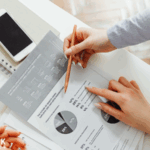As global commerce navigates economic fluctuations and evolving consumer expectations, companies like Delta Air Lines have turned to dynamic pricing strategies to stay competitive. This pricing technique, adjusting costs in real time based on demand fluctuations, has long been a staple in sectors such as airlines and hospitality, where the practice helps maximize revenue and manage resources efficiently. However, its application in the current economic environment has raised questions about fairness, transparency, and consumer rights.
Dynamic pricing is not new to Delta, which is currently exploring artificial intelligence tools to tailor individualized fares while grappling with concerns over privacy and fairness. Previously, companies faced significant pushback, often prompting withdrawal or adjustment of their pricing experiments to address consumer dissatisfaction. This mirrors the current situation at Delta, where fears over potential ‘surveillance pricing’ loom large, exacerbating these longstanding concerns.
Why Is Dynamic Pricing on the Rise?
Dynamic pricing is gaining traction as companies respond to external cost drivers, like rising tariffs, which provide justification to adjust prices. Wharton marketing professor Z. John Zhang pointed out that firms capitalize on these developments, suggesting that competitive pressures lessen fears of losing market share when implementing dynamic pricing. This creates a more forgiving consumer environment, as shoppers become accustomed to fluctuating prices in response to market conditions.
Are There Risks with Dynamic Pricing?
The risks associated with dynamic pricing often stem from a lack of transparency and consumer backlash, especially when perceived as unfair or intrusive. Zhang referenced Wendy’s attempt at surge pricing, which led to public discontent and a retraction of the initiative. Such examples stress the importance of clear communication and perceived consumer benefit to mitigate negative reactions.
Despite Zhang’s observations, Delta Air Lines has faced scrutiny following its announcement of testing an AI system for personalized pricing. Concerns emerged over potential misuse of personal data and ‘surveillance pricing,’ prompting statements from the airline to reassure stakeholders. Delta clarified that their AI technology does not exploit personal data to set individual prices, attempting to alleviate some of the fears associated with their dynamic pricing system.
“There is no fare product Delta has ever used, is testing, or plans to use that targets customers with individualized prices based on personal data,” said Peter Carter, Delta’s Chief External Affairs Officer. Meanwhile, Zhang suggests an alternative method: introducing dynamic discounting by commencing with higher baseline prices, potentially offering a pathway to a more consumer-friendly approach.
As dynamic pricing becomes more entrenched, companies may benefit from focusing on strategies that emphasize value rather than merely adjusting prices. Transparency remains critical, as consumer backlash can lead to significant reputational damage and erode trust. By embracing clear communication and ensuring consumer rights are respected, businesses can harness dynamic pricing’s potential while maintaining customer loyalty.










